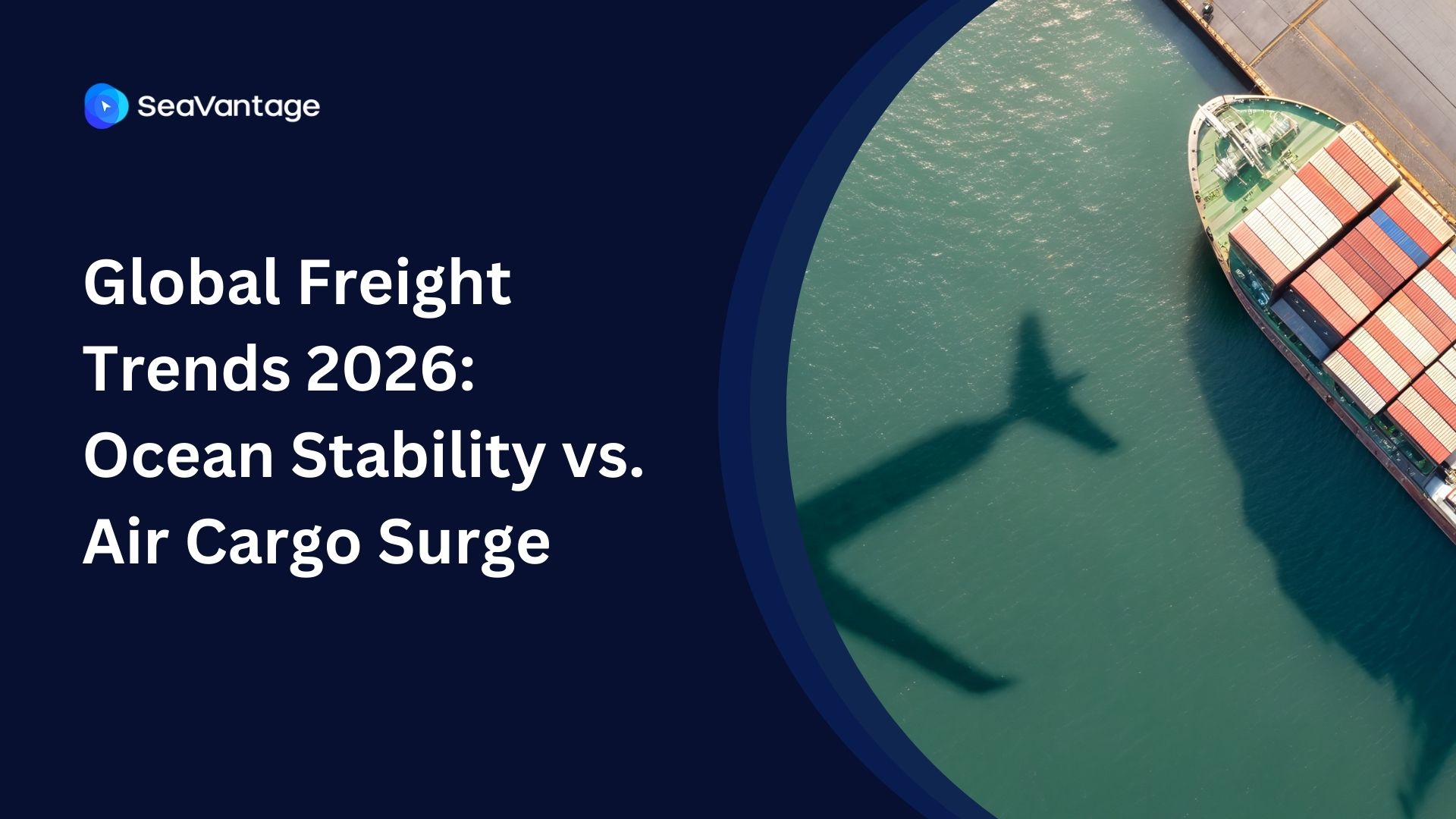4 Data Challenges Freight Forwarders are Facing in 2022

Despite the fact that almost everyone has a GPS tracking device in their pocket, tracking the location and status of vessels and containers continue to be one of the top challenges facing freight forwarders in the shipping industry.
Even for those who can "see" the location of shipments, there is little they can do when they are delayed. Data on ocean shipping remains a major challenge for the shipping industry.
This article outlines the data challenges freight forwarders encounter in managing their ocean freight logistics.
1. Inaccurate and Limited Shipping Data
Accurate shipping ETA data plays an essential role in the supply chain as it typically determines the total time for delivery of the shipment. However, access to this data can be limited when it comes to certain information. Calculating the correct ETA is challenging due to uncertain external factors that impact arrival time.
2. On-time delivery of Shipping Data
The timely delivery of ETA changes and updates is crucial to freight professionals as it often has a ripple effect on the rest of the supply chain. However, these updates are usually available several hours or days after the fact, making them less useful in proactive logistics planning.
3. Hassle Finding & Providing Shipping Data
Freight forwarders play an important role in the supply chain as they act as mediators with stakeholders about the status of their cargo. However, accessing tracking data remains a challenge when it comes to locating cargo, and tracking vessel arrivals and delays.
4. Complications from the pandemic
In the wake of the pandemic, lockdowns have exacerbated the challenges of gaining reliable shipping data. Unprecedented delays at container ports, blank sailings, and port capacity constraints further impacted shipment lead times.
For supply chain professionals, getting accurate data on container and vessel arrival is crucial to maintaining smooth operations. There is a greater need than ever before for supply chain managers to have accurate, real-time ocean visibility.
SeaVantage Ocean Visibility Platform
We provide shipment visibility and predictive analytics to enable shippers and other stakeholders to navigate through these challenges. Delight your customers, reduce fines related to demurrage and detention and improve your labor operations by integrating with our advanced visibility platform.
Founded in 2018, SeaVantage is a fast-growing start-up helping companies transform their ocean supply chain with real-time and predictive visibility solutions. Top leading companies including Samsung SDS, POSCO, Hyundai GLOVIS, and Lotte Global Logistics utilize and trust our data solutions to optimize their maritime logistics and operations.
Our cargo insight, ship insight, and port insight platforms help our customers proactively manage and respond to unforeseen disruptions in their ocean transport, which in turn ensures a better quality of service for their end customers and financial gains.
2025년 9월, 주요 글로벌 항만에서 어떤 운송사가 가장 긴 선박 체류 시간을 기록했는지 확인해보세요. 트렌드를 비교하고, 지연을 파악하며, 전체 항만 데이터를 통해 운송 전략을 최적화할 수 있습니다.
2025년 8월, 주요 글로벌 항만에서 어떤 운송사가 가장 긴 선박 체류 시간을 기록했는지 확인해보세요. 트렌드를 비교하고, 지연을 파악하며, 전체 항만 데이터를 통해 운송 전략을 최적화할 수 있습니다.
2025년 7월, 주요 글로벌 항만에서 어떤 운송사가 가장 긴 선박 체류 시간을 기록했는지 확인해보세요. 트렌드를 비교하고, 지연을 파악하며, 전체 항만 데이터를 통해 운송 전략을 최적화할 수 있습니다.
iscover the 4 critical ocean freight trends for 2026, from the Red Sea reopening and fleet overcapacity to shifting global trade maps. Prepare your supply chain now.
Discover key 2026 freight market trends: Port of Houston expansion, air cargo "super peak," and ocean freight stability. Plan your supply chain with SeaVantage.
Explore November 2025 global port dwell time data. See which ports and carriers led in efficiency across Antwerp, Busan, Long Beach, Rotterdam, and Singapore.



.svg)





.jpg)

.png)